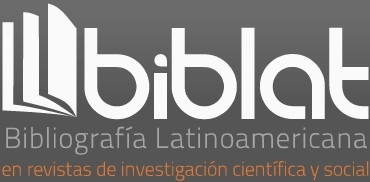For an ecological semiotics
DOI:
https://doi.org/10.35494/topsem.2018.1.39.527Keywords:
living/medium interactions, man/nature collectivities, scientific discourse, political discourse,Abstract
Semiotics can contribute to studies on the environment in three
complementary ways, but which imply very different commitments:
1) the analysis of discourses on the environment, and
especially the way in which scientific and political discourses
take them up and also distort them; 2) the analysis of environmental
objects, such as landscapes and environmental practices;
3) the analysis of the interactions between the living being and its
environment. In the latter case, the study of ecological interactions
leads, in particular, to establish the meaning of the different
types of collectives that we create with the other entities of our
environment, whether they are living or not. The case of the
cooperative located in Ardèche (France) illustrates this last point.
Downloads
References
BERQUE, Augustin (1986). Le sauvage et l’artifice. Les Japonais devant la nature. París : Gallimard.
BORDEAU, Vincent et JARRIGE, François (2015). (Propos recueillis
par), « Vivre en travaillant. L’expérience de la société coopérative
‘Ardelaine’ à Saint Pierreville. Entretien avec Béatrice et Gérard
Barras ». París : La Découverte, Mouvements, núm. 84, vol. 4,
pp. 82-93.
BARRAS, Béatrice (2001). « La Scop Ardelaine, un projet coopératif de développement local », Revue internationale de l’économie sociale (recma), núm. 281. [En ligne] : http://www.recma.org/article/la-scop-ardelaine-un-projet-cooperatif-dedeveloppement-local
DESCOLA, Philippe (2005). Par-delà nature et culture. París : Gallimard.
GEERTZ, Clifford (1973). The Interpretation of Cultures. Nueva York: Basic Books.
___________ (1988). « La description dense », Enquête, núm. 6 [En ligne] : http://enquete.revues.org/1443.
GREIMAS, Algirdas Julien (1997). De la imperfección. México. FCE/
BUAP.
LANDOWSKI, Eric (2005). « Les interactions risquées ». Nouveaux
Actes Sémiotiques. Limoges : Pulim, núm. 102-103-104 [trad. al
español de Desiderio Blanco, Interacciones arriesgadas, Lima,
UNILIM, 2012].
___________ (2017). « Petit manifeste sémiotique en l’honneur et à l’attention du camarade sociologue Pekka Sulkunen », dans
Sémiotique et engagement. Actes Sémiotiques, núm. 120 [En ligne] : http://epublications.unilim.fr/revues/as/5816
LOTMAN, Iuri (1996a). Вселенная ума, «Языки русской культуры » [Versión en francés: L’univers de l’esprit. coll. Les langages de la
culture russe. Moscú : Éditions Universitaires de Tartu].
___________ (1996b). La semiosfera. Semiótica de la cultura y del texto, vol. I. Madrid: Frónesis Cátedra: Universitat de Valéncia;
selección y trad. de Desiderio Navarro.
MARRONE, Gianfranco (2015). « Resistenza naturale ». En Guido Ferraro, Alice Giannitrapani, Gianfranco Marrone & Stefano Traini
(eds.). Dire la natura. Ambiante e significazione. Araccia/Aracne,
col. Lexia, núm. 17.
UEXCÜLL, Jakob Johan von (1934). Mondes animaux et monde humain. Suivi de Théorie de la signification [trad. fr. Bibliothèque Médiations Denoël, 1965. Pocket, coll. Agora, 2004] [Reeditado bajo el título Milieu animal et milieu humain, Rivages, 2010].
Downloads
Published
How to Cite
Issue
Section
License

Tópicos del Seminario is licensed under a Creative Commons Reconocimiento-NoComercial-CompartirIgual 4.0 Internacional License.














